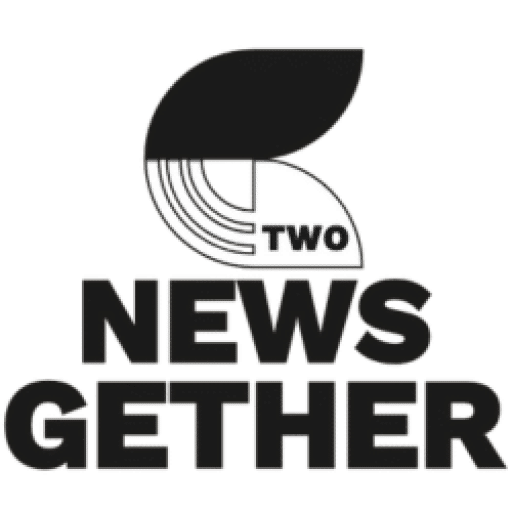Expanding health insurance access for low-income individuals

Expanding health insurance access for low-income individuals involves increasing Medicaid funding, promoting health literacy, and implementing affordability programs to ensure equitable access to essential healthcare services.
Expanding health insurance access for low-income individuals is crucial in creating a healthier society. Have you ever wondered how many people struggle without adequate coverage? In this article, we’ll dive into the barriers they face and explore effective solutions.
Understanding the current health insurance landscape
Understanding the current health insurance landscape is vital for anyone seeking affordable coverage. This landscape is constantly changing, making it important for low-income individuals to stay informed about their options. The variety of plans available can be overwhelming, but knowing the basics helps.
Types of Health Insurance Plans
There are mainly three types of health insurance plans available today. Recognizing these can simplify how you choose coverage:
Accessing quality care is essential for low-income individuals. However, many still don’t have sufficient information about which plan suits their needs. Misunderstandings about costs and coverage can lead to the wrong choices.
Key Factors in Choosing a Plan
When selecting a health insurance plan, consider these key factors:
The right choice can make a huge difference in accessing necessary care. Many factors, including personal health needs and financial capacities, play a role.
Staying updated on policy changes is also crucial, as reforms can affect coverage options. For example, new regulations may expand access to preventive services, making them available at no additional cost. Learning about these changes empowers individuals to take control of their health care.
In conclusion, understanding the current health insurance landscape is essential for navigating the options available. By recognizing various plans and key factors in your decision-making, low-income individuals can find coverage that meets their needs.
Challenges low-income individuals face in accessing coverage
Challenges low-income individuals face in accessing coverage can be significant and complex. Many people are unaware of the options available, making it difficult to find suitable health insurance plans. These challenges can lead to missed opportunities for receiving care.
Common Barriers to Coverage
Some of the common barriers include:
These factors contribute to the struggles faced by low-income individuals when seeking health insurance. For many, the confusion surrounding health care benefits can lead to delays in accessing essential services.
The Impact of Health Literacy
Health literacy plays a key role in how individuals navigate the health insurance landscape. When people do not fully understand their health benefits, they may avoid seeking care. A low health literacy level can cause:
Not understanding how to access or use health insurance can lead to serious health consequences and increased costs over time. This is why increased education and support are crucial for low-income communities.
In addition to health literacy, trust in the system is vital. Some individuals may have had negative experiences with health insurance in the past, leading to skepticism. Building trust within communities can enhance participation and encourage individuals to seek out coverage.
Overall, understanding and addressing the challenges low-income individuals face in accessing coverage is essential. Through targeted efforts, we can help bridge the gaps and improve access to necessary health services.
Innovative solutions to improve health insurance access

Innovative solutions to improve health insurance access are essential for addressing the needs of low-income individuals. As health care systems evolve, new approaches emerge to help more people gain affordable coverage. It’s crucial to explore these solutions and understand how they can make a difference.
Technology in Health Insurance
Technology plays a vital role in expanding access to health insurance. Online platforms and mobile apps streamline the application process, making it simpler for individuals to find information and enroll in plans. Some key benefits include:
This technological shift allows users to make informed decisions without the frustration of navigating complex paperwork.
Community-Based Programs
Community-based programs also offer innovative solutions for improving access. These programs often provide on-the-ground support tailored to local needs. Examples of successful initiatives include:
By utilizing community resources, these programs build trust and empower individuals to take charge of their health.
In addition to technology and community programs, policy reforms are critical for expanding access to health insurance. Advocacy for changes, such as lowering premium costs and expanding Medicaid coverage, can make essential health services more attainable.
Furthermore, initiatives that promote affordability, like sliding scale premiums based on income, can help bridge the gap for many families struggling to afford coverage. Overall, a multifaceted approach that combines technology, community engagement, and policy improvements can enhance access to health insurance for low-income individuals and create a healthier society.
Case studies of successful health insurance programs
Case studies of successful health insurance programs can provide valuable insights into how to effectively expand coverage for low-income individuals. These examples highlight innovative strategies that have improved access to essential services. Understanding what works can inspire similar initiatives in other communities.
Program Example: Medicaid Expansion
One of the most notable examples is Medicaid expansion under the Affordable Care Act (ACA). States that adopted this program saw significant increases in the number of insured individuals. Key outcomes include:
This program demonstrates how expanding coverage not only benefits individuals but also positively impacts public health overall.
Program Example: Community Health Centers
Another success story comes from community health centers (CHCs). These centers serve low-income populations by providing accessible and affordable health services. Some strengths of CHCs include:
By removing barriers to access, CHCs play a crucial role in reaching underserved populations and improving overall health outcomes.
Additionally, preventive care initiatives within these programs have shown strong results. When individuals receive preventive services, they are less likely to develop serious health issues, thus reducing long-term costs for the healthcare system. Successful case studies demonstrate the importance of targeted outreach and education about available services.
Each case study provides lessons learned that can inform future programs. Sharing best practices among communities encourages innovation and collaboration, leading to more effective health coverage solutions for low-income individuals.
Policy recommendations for expanding access
Policy recommendations for expanding access to health insurance are essential for improving coverage among low-income individuals. Policymakers have the power to implement changes that can significantly alter the health landscape. By adopting effective strategies, they can help ensure that more people receive necessary care.
Increase Funding for Medicaid
One key recommendation is to increase funding for Medicaid. This expansion can allow more low-income individuals to qualify for coverage. Benefits of increased funding include:
These changes can lead to better health outcomes and reduced disparities among underserved populations.
Promote Health Insurance Literacy
Another important strategy is to promote health insurance literacy programs. Increasing awareness and understanding of available options can empower individuals. Key aspects include:
By clarifying health insurance concepts, individuals can make informed choices, ensuring they select the best coverage for their needs.
Additionally, developing policies that support affordability is crucial. Solutions such as implementing caps on premium costs based on income can alleviate financial burdens. Programs that offer subsidies for low-income families can also help enhance access to necessary health care services.
Collaborations between public and private sectors can lead to successful health initiatives. For example, partnerships with nonprofit organizations can offer local support and outreach, bridging the gap between service providers and the community.
Ultimately, policy changes that focus on expanding Medicaid, promoting health insurance literacy, and ensuring affordability can make a significant impact. These recommendations encourage a healthier society by improving access to essential services for all.
In conclusion, expanding health insurance access for low-income individuals is crucial to building a healthier society. Through innovative programs and policies, we can improve coverage and ensure that everyone has the opportunity to receive necessary care. By focusing on funding, health literacy, and community engagement, we can overcome the challenges faced by vulnerable populations. Together, we can create an inclusive health care system that promotes well-being for all.
FAQ – Frequently Asked Questions about Expanding Health Insurance Access
What is Medicaid expansion and how does it help low-income individuals?
Medicaid expansion allows more low-income individuals to qualify for health coverage, increasing access to essential health services.
How can health insurance literacy programs benefit the community?
These programs educate people about their options, empowering them to make informed choices about their health coverage.
Why are community partnerships important for health outreach?
Community partnerships enhance outreach efforts, ensuring that local populations receive the information and support they need to access health insurance.
What role do affordability programs play in accessing health care?
Affordability programs, like sliding scale premiums, help make health insurance more accessible by adjusting costs based on income levels.






